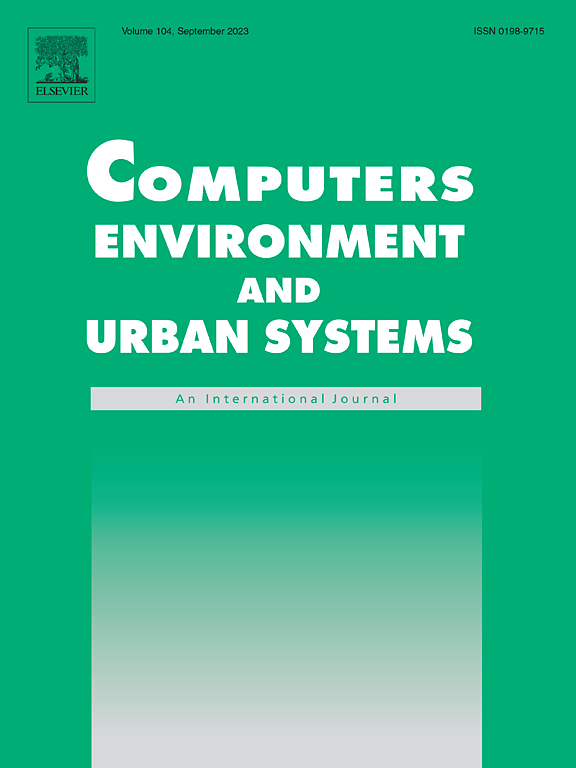Spatial accessibility and transport inequity in Finland: Open source models and perspectives from planning practice
IF 8.3
1区 地球科学
Q1 ENVIRONMENTAL STUDIES
Computers Environment and Urban Systems
Pub Date : 2024-11-22
DOI:10.1016/j.compenvurbsys.2024.102218
引用次数: 0
Abstract
During the last two decades, accessibility has begun to take a more central role in transport planning and decision making, as its importance has been recognized in many different policy agendas. Although environmental and social sustainability are central in contemporary public policy, the social exclusion effects related to access of opportunities are rarely measured at the national level. In this study, we analyze spatial accessibility to various opportunities in Finland at 1 km resolution and assess accessibility inequalities using the Palma ratio. Furthermore, we test how a web-based tool can be used in stakeholder communication and investigate the usefulness of the accessibility indicators and the tool for planning practice based on focus group discussions with Finnish transport planners. Our results show significant variation in the levels of access to different opportunities across Finnish municipalities. The Palma ratios reveal that the largest disparities are typically located in municipalities surrounding large city regions, where wealthier residents tend to have better access to opportunities compared to low-income populations. Finally, the insights from Finnish planning practitioners reveal that communicating national-level accessibility information via an online tool has high communicative and learning value for various planning and policy processes.
芬兰的空间可达性和交通不平等:来自规划实践的开源模型和观点
在过去二十年中,可达性开始在交通规划和决策中发挥更重要的作用,因为它的重要性已在许多不同的政策议程中得到承认。虽然环境和社会可持续性是当代公共政策的核心,但与获得机会有关的社会排斥效应很少在国家一级加以衡量。在这项研究中,我们分析了芬兰在1公里分辨率下各种机会的空间可达性,并使用帕尔马比率评估可达性不平等。此外,我们测试了基于网络的工具如何用于利益相关者沟通,并基于与芬兰交通规划者的焦点小组讨论,调查了可达性指标和规划实践工具的有用性。我们的研究结果显示,芬兰各城市获得不同机会的水平存在显著差异。帕尔马比率显示,最大的差距通常位于大城市周边的城市,那里的富裕居民往往比低收入人口有更好的机会。最后,芬兰规划从业者的见解表明,通过在线工具交流国家级无障碍信息对各种规划和政策过程具有很高的交流和学习价值。
本文章由计算机程序翻译,如有差异,请以英文原文为准。
求助全文
约1分钟内获得全文
求助全文
来源期刊

Computers Environment and Urban Systems
Multiple-
CiteScore
13.30
自引率
7.40%
发文量
111
审稿时长
32 days
期刊介绍:
Computers, Environment and Urban Systemsis an interdisciplinary journal publishing cutting-edge and innovative computer-based research on environmental and urban systems, that privileges the geospatial perspective. The journal welcomes original high quality scholarship of a theoretical, applied or technological nature, and provides a stimulating presentation of perspectives, research developments, overviews of important new technologies and uses of major computational, information-based, and visualization innovations. Applied and theoretical contributions demonstrate the scope of computer-based analysis fostering a better understanding of environmental and urban systems, their spatial scope and their dynamics.
 求助内容:
求助内容: 应助结果提醒方式:
应助结果提醒方式:


